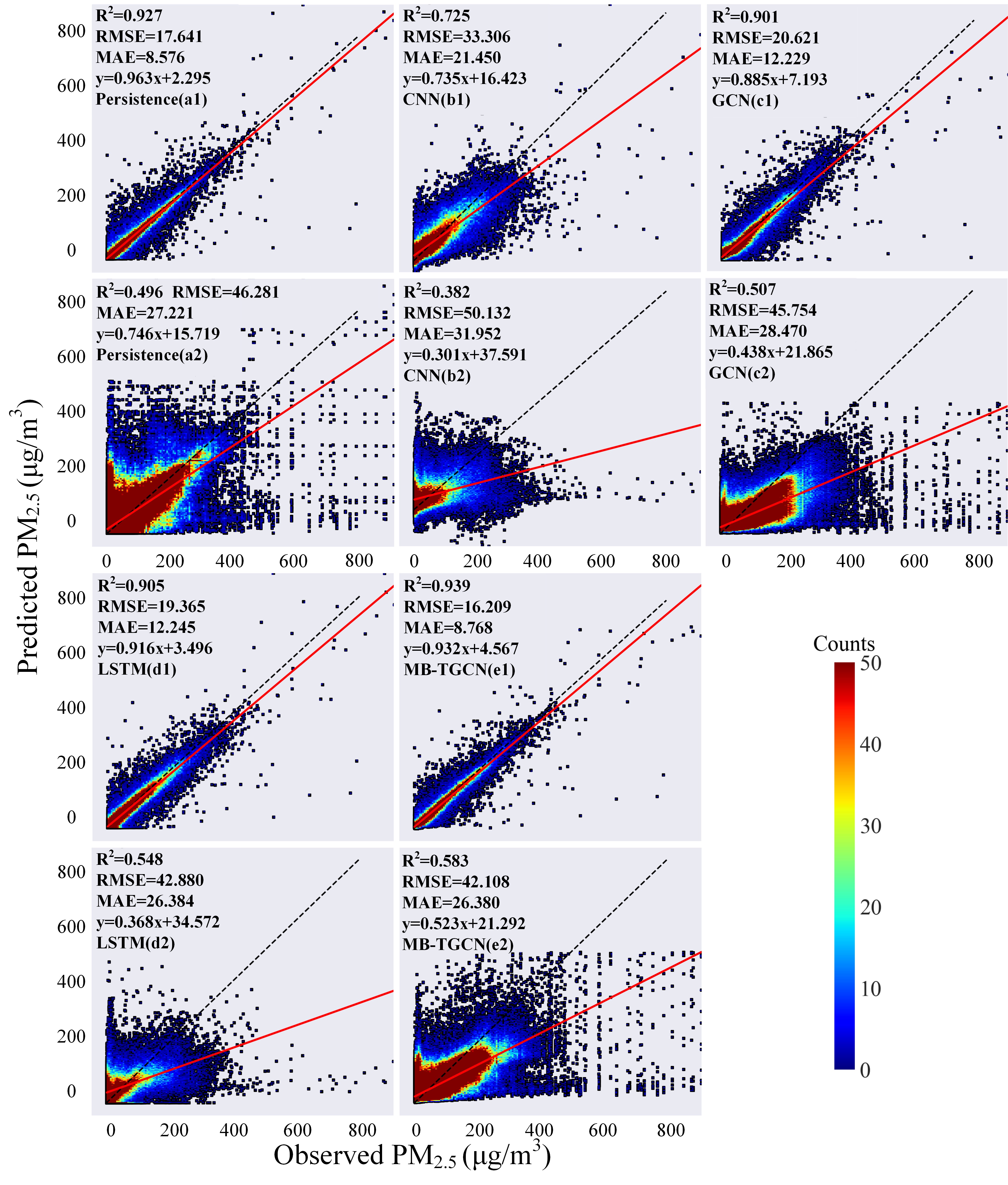Title:Predicting short-term PM2.5 concentrations at fine temporal resolutions using a multi-branch temporal graph convolutional neural network

Abstract
Predicting PM2.5 concentrations at an hourly temporal resolution in urban areas can provide key information for public health protection. The spatiotemporal dependency among monitoring stations and the spatiotemporal correlations between PM2.5 and relevant factors (e.g. meteorology and emissions) are both essential for such predictions. This study proposes a multi-branch temporal graph convolutional neural network (MB-TGCN) for short-term predictions of PM2.5 concentrations at city monitoring stations. Composed of a set of graph convolutional networks (GCNs) for spatial dependency modeling, a set of gated recurrent units (GRUs) for temporal dependency modeling, and a multi-branch structure for integrating PM2.5 and relevant factors, MB-TGCN aims to accurately predict PM2.5 concentrations by capturing both spatial and temporal relationships through a graph modeling approach. Experiments with an air quality dataset from 35 stations in Beijing showed that MB-TGCN achieved higher accuracy than several deep learning models for various prediction durations ranging from 1 to 12 h. The method described in this study can help enhance the prediction capability of PM2.5 and provide decision support for environment-aware activity planning.
Keywords
PM2.5 prediction;
spatiotemporal dependency;
graph convolution network;
meteorological factors;
air pollution
Full Text Download
International Journal of Geographical Information Science
Q.E.D.









